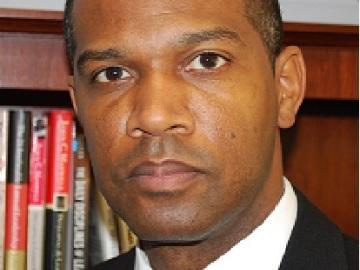
Section Branding
Header Content
Beach High Gets Face Lift
Primary Content

When the bell rang students back to Savannah's Beach High School this weeks, students and faculty came back to the news that the long-struggling school -- filled with poor and at-risk students -- now acutally leads the district in some tests. That's a big change from just a few years ago -- when ambivalent students took failure for granted.
Men in hard hats dash in and out of unfinished buildings at the new Beach High School, expected to open next year. Wires dangle and wet concrete dries. The school is getting new buildings to match its new attitude. Only a few years ago, Beach was listed as one of the state's worst-performing schools. Now fourth-generation Beach High graduate Sebrina Caldwell says, there's hope in the air.
"I am so proud to be a Beach High alumni and have my daughter go to this school," Caldwell says.
Beach failed to meet state standards seven years in a row before officials decided to do something radical. They asked for and received a $3 million grant, one of the first in an Obama administration school improvement policy. To get the money, the district replaced half the staff two years ago. The upheaval made national headlines and upset many teachers. But it introduced Savannah to a young, energetic new principal, Derrick Muhammad.
"Everything counts," Muhammad says.
The dapper, fast-talking and ever-optimistic educator gestures enthusiastically as he walks down the cinder block hallways of the aging, present school structure.
"We give a lot of benchmark assessments," he says. "So every two or three weeks, give an assessment see where they're doing and then we'll regroup those students on ability."
Muhammad gets a lot of credit for the school's turnaround. But he insists, his reforms are nothing new, just old-fashioned, well-known ideas that are actually implemented. These include, "If a student isn't learning, give them extra help," in this case, after-school tutorials.
"I have a policy here that if a student fails a test, they can make up that test because to me, it's not when they know it if it's the know it," Muhammad says. "But here at Beach, if today I take a test and I fail, I do have to come to tutorials first, mandatory tutorials, then I can make that assessment up."
Teachers get extra training. And every student is tracked in a "data room."
When you walk into the room, an ordinary classroom, hundreds of color-coded cards are tacked up on the walls in a detailed snapshot of each student's success or failure.
"When you come into the room, you'll see four big areas and each area is separated by grade level," he says. " And on these backgrounds we have 3x5 index cards and these index cards represent every single student."
The cards note areas of concern and milestones of success with exclamation points. Asked randomly about a few of the cards, Muhammad seemed to know each students' story personally. The school's transformation isn't rare. Many schools have turned around using the same federal model as Beach. But Maria Ferguson of the Washington, D.C. based Center for Education Policy says, those schools are usually in elementary and middle grades.
"It's always really interesting to me to hear feedback about a positive turnaround model at a high school because high is a difficult thing," Ferguson says. "It's a lot more difficult to turnaround a high school."
End-of-Course Tests released earlier this year show scores in Math Two improved 50% to a 63% pass rate, exceeding state targets. Other subjects also improved by double digits. But keeping the results going will be tough. Both federal and state officials are raising expectations and changing measurements of success. And that's before everyone finds their way around a new building.
Tags: Georgia, Savannah, high school, grant, beach, obama, GPB News, Washington D.C., orlando montoya, Derrick Muhammad, Maria Ferguson, Alfred E. Beach, A. E. Beach, A.E. Beach, end-of-course, sabrina candwell, center for education policy
